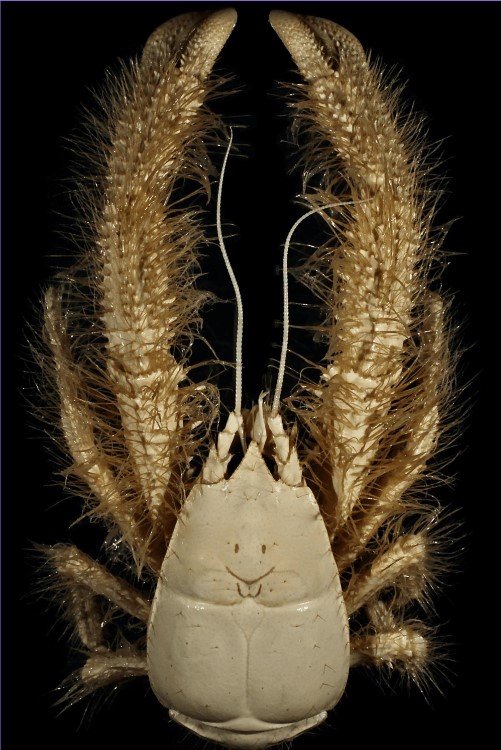The yeti crab is a fascinating creature that lives in the deep sea, near hydrothermal vents and cold seeps. It belongs to a new genus and family of crustaceans, named Kiwa after the Polynesian goddess of shellfish. It was discovered in 2005 by a team of scientists in the South Pacific Ocean, south of Easter Island.
One of the most striking features of the yeti crab is its hairy appearance, which earned it the nickname of "yeti lobster" or "furry lobster". The hairs, or setae, are actually covered with symbiotic bacteria that the crab cultivates and feeds on. The crab waves its hairy claws over the vents or seeps to expose the bacteria to the chemicals that they need to perform chemosynthesis, a process that converts inorganic substances into organic matter. The crab then harvests the bacteria with specialized mouthparts and eats them.
The yeti crab has other adaptations to its extreme environment, such as reduced eyes that lack pigment and are thought to be blind, and a pale white coloration that reflects the absence of light. The yeti crab also has a high tolerance to temperature fluctuations, as it lives near sources of hot water that can reach up to 400°C (752°F). The yeti crab is about 15 cm long and weighs between 2 and 5 pounds.
The yeti crab is one of the many examples of the diversity and complexity of life in the deep sea, especially around hydrothermal vents and cold seeps. These habitats are rich in energy and nutrients, but also pose many challenges for the organisms that live there. The yeti crab has evolved a unique way of coping with these challenges, by forming a mutualistic relationship with bacteria that provide it with food and detoxify harmful substances.

